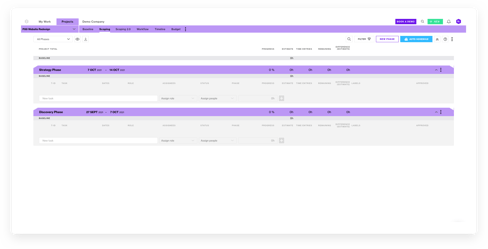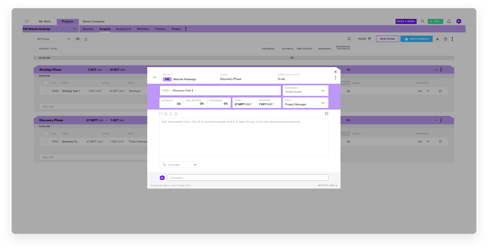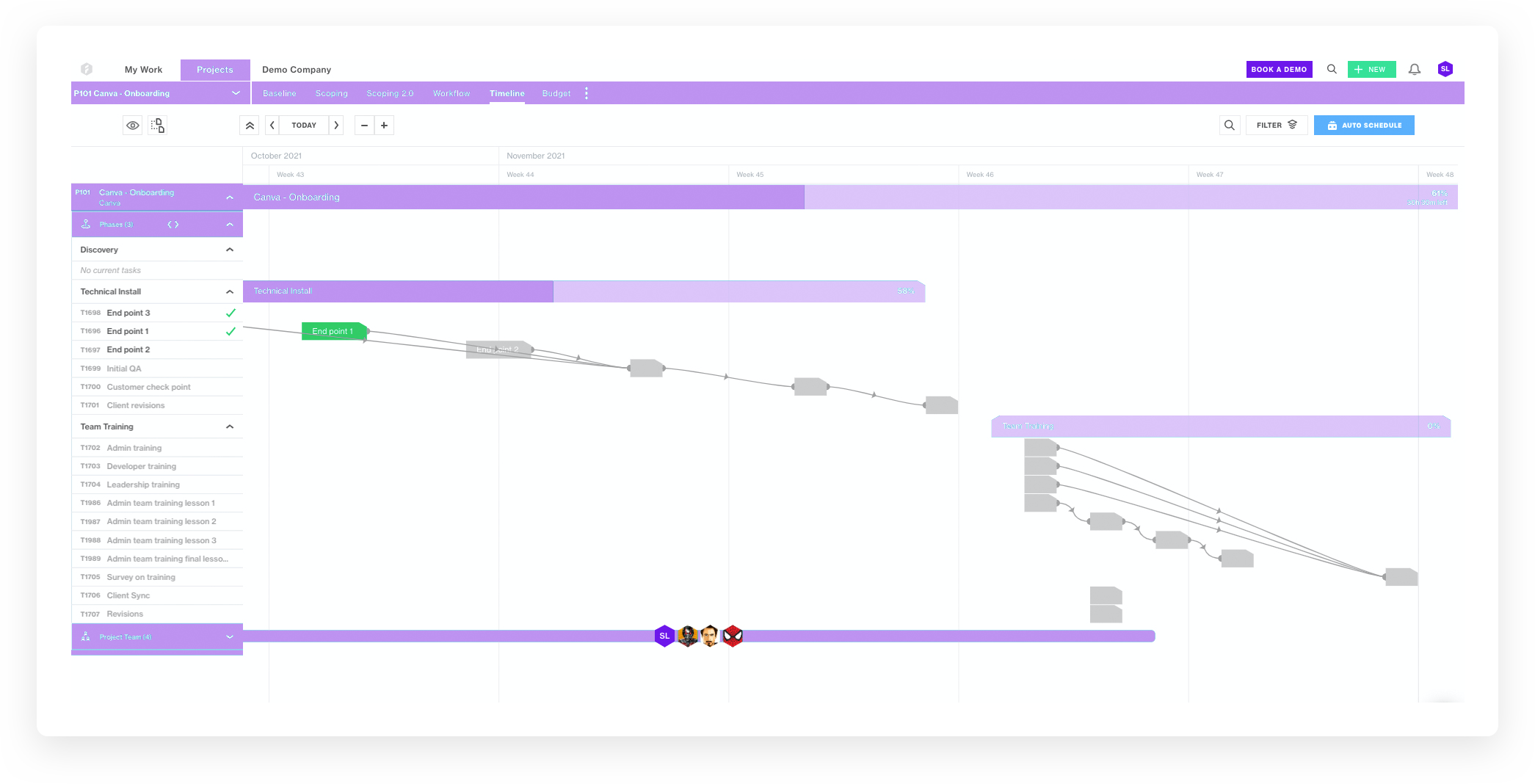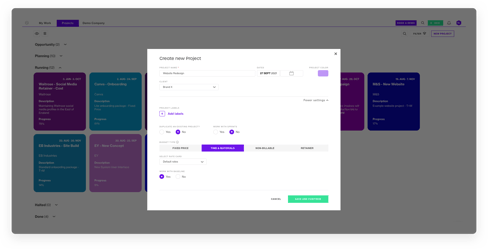Work Breakdown Structure: How to Create a Killer WBS

If you work in Project Management, undoubtedly you will have heard people talking about Work Breakdown Structures. You may have even been told that nothing else in the project plan can get done until the ‘WBS’ has been delivered. So, why is the Project Management world so hung up on them, and what’s the most effective way to create one?
If you’re struggling to imagine what a Work Breakdown Structure is trying to do and why this would be helpful, think of a map with a route drawn on it. In the same way as the route represents a journey, your WBS plots every twist and turn that your project will need to take in order to deliver your goals.
The WBS: Just Another Box to Tick?
If you’re tempted to dismiss the Work Breakdown Structure, our advice is: don’t. This cornerstone of project management has a noble pedigree, with NASA being one of the first organizations to require a Work Breakdown Structure as part of their project planning process. With the weight of the space race on their shoulders, NASA’s engineers found that the WBS helped them plan out projects which involved multiple agencies and many stakeholders.
But even if you’re not trying to get a satellite into space, project management best practice says that you still need to create a WBS. Seasoned Project Managers with the PMI (Project Management Institute) vouch for the necessity of creating a Work Breakdown Structure. Go without one, they said, and chance "repeated project re-plans and extensions, unclear work assignments, scope creep...budget overrun, missed deadlines, and unusable new products or delivered features."
For the sake of saving yourself a step in the project planning process, the risks clearly aren’t worth it. A well executed Work Breakdown Structure helps you scope out your project more accurately, enabling any next steps in your planning - such as a Project Schedule and a Critical Path diagram - to be more accurate from the very beginning. Skipping the WBS makes it far more likely that any other planning documents will be flawed.
But we understand that Project Managers lead busy lives. You can’t afford to spend time making neat but static documents that you look at once and never refer to again. Luckily, intelligent project management platforms are stepping up and making your WBS do a ton of heavy lifting. In the right platform, if you take the time to create a quality Work Breakdown Structure, it pays off. Your Project Schedule generates automatically, your Gantt Chart is automatically populated, and you continue to gather real-time insights as the work progresses.
In short, your Work Breakdown Structure has the potential to save you bags of time and stress - not only in helping you map out your work and avoid missteps, but also in future reporting on the health of your project.
How do you Create a Work Breakdown Structure?
If you start off on a path without knowing your destination, you’ll be in the weeds before you know it. By definition, the Work Breakdown Structure breaks your project down into the work that will deliver the objectives. That’s why formulating the Work Breakdown Structure has to come after you’ve defined the goals and objectives of your project.
Once you’ve got a firm grasp of your project goals, our step-by-step guide will put some rocket fuel in your project and help you achieve WBS success.
- Choose the Right Tool
- Start with Objectives
- Define the Phases That Will Get You There
- Identify the Tasks within the Phases
- Map Out Subtasks
- Assign Tasks to Owners
1. Choose the Right Tool
There are many different tools you can use to create your Work Breakdown Structure (including pen and paper), but ultimately the purpose of the structure remains the same. Examples of possible Work Breakdown Structure formats include everything from a simple list, to a diagrammatic flow chart or a Gantt chart. It just depends on what you want to do with your WBS once you’ve completed it, and how complex the project is.
Some project managers swear by using an Excel template for a Work Breakdown Structure. But if your project is multifaceted, with many dependencies and a number of different people, you might be crying out for a spreadsheet alternative by the end. If you want to turn your Excel WBS into a Gantt chart, for instance, this entire process will be manual. And if you need to make any tweaks, let’s hope you have a few hours spare to go through and change the whole thing by hand.
Modern project management solutions are set up to cut down on duplicated work. When you break down your project in a platform like Forecast, the high-level project overview doesn’t remain static: insight data changes as your project progresses, giving you a top-down view of financials and time spent.
2. Start with Objectives
For the top level of the Work Breakdown Structure, state your overall project goal. The detail comes later - for now, all you need is the ‘what’ of your project. When creating a Work Breakdown Structure, best practice is to stay focused on deliverables. Try to set this focus from the very top.
For instance, if your project is to launch a new, revamped website for your company, the website is the deliverable. The top level of your WBS could just be ‘Website Redesign’. That’s the destination: now, working backwards from this endpoint, the next steps map out how you get there.
3. Define the Phases That Will Get You There
Once you’ve got your ‘what’, you can move onto the ‘how’. How will you achieve successful completion of your project? The purpose of a Work Breakdown Structure, after all, is to map out all of deliverables in a project, and all of the work it will take to achieve them.
So, the next stage of the WBS is to break the project down into phases: working backwards from your final goal, what do you need to do to deliver?
You might notice that your project phases have to follow a certain sequence. One thing may have to come after another. Using our previous example of launching a new website, you can’t sort out hosting before you have a domain name. Buying the domain would have to come first.
It may take you a while to decide what order you want your phases to sit in. You may need to rearrange the order several times before you feel ready to move on. Flexible project phasing is built into Forecast’s makeup. Even if you complete your entire WBS, you can still go back and rearrange the order of your phases, without losing any of the data that sits within your phases. And your Gantt Chart view will automatically update to reflect the changes. No mess, no fuss (and no fiddly formulas).

4. Identify the Tasks with the Phases
The guiding principle of the Work Breakdown Structure is 'decomposition' - breaking things down sequentially, with increasing granularity. So, after defining your phases, you’ll figure out the tasks that need to be done to get each phase finished.
If you work in agile, each task might represent what you can fit in a sprint. Even if you don’t run agile, a good rule of thumb is that a task shouldn’t take less than 8 hours or more than 80 hours to complete. Less than 8 hours, and it’s probably a smaller task that depends on something else getting done. More than 80, and it probably could (and should) be broken down further to stop it getting out of hand.
Being precise at this stage is essential. An effective Work Breakdown structure will help keep the whole team on the same page, so don’t leave room for ambiguity here.

5. Map Out Subtasks
For simple projects, you might finish your WBS once you’ve identified your tasks. But most projects assigned to a Project Manager are not that simple. You may need to go one step further.
Fortunately, the format of a Work Breakdown Structure is flexible. It allows you to get as detailed as you need, providing you don’t get bogged down and lose the big picture amidst the fine details. This is where constructing your WBS in an intelligent project management platform can really make the difference.
Forecast was born to tackle projects of hefty complexity without losing oversight of how each task relates to the larger goal. Within each task module, you can add two levels of subtask, allowing you to drill down into several levels of specificity, and add additional ‘to-dos’ to each task
A central goal of your WBS should be to capture 100% of the work that is needed on a project. This level of specificity means that you eliminate the risk of missing anything out.

6. Assign Tasks to Owners
At this point, your Work Breakdown Structure is almost complete - except for one crucial element. Currently, you’ve mapped out all of the work that will take place in your project. But a task isn’t going to do itself. Someone needs to be responsible for it.
Assigning tasks to team members is the vital final step to turn your WBS into a workable document that will carry you forward into the next stage of your project plan.
In Forecast, not only can you easily assign a team member to a task, but it will automatically notify them when you do so. That way, your Work Breakdown Structure in Forecast is a jumping-off point that initiates action, rather than a document purely for your own reference.
Putting Your WBS to Work
It goes without saying that you want the time taken to build a Work Breakdown Structure to actually be time well spent. A static artefact might be handy for a proposal or presentation, but its use doesn’t have to stop there.
Your time is valuable, and if you want your Work Breakdown Structures to continue to work for you as your projects move forward, consider giving Forecast a try. Not only will your WBS be finished in a matter of minutes, it will generate an automatic Gantt Chart, track financials and resourcing in real-time, and remain totally malleable if you need to make any changes. Sound good? Sign up for our free trial below and see how powerful a full-suite project management platform can be.
You might like to read these articles on our blog..
Subscribe to the Forecast Newsletter
Get a monthly roundup of productivity tips & hacks delivered straight to your inbox

